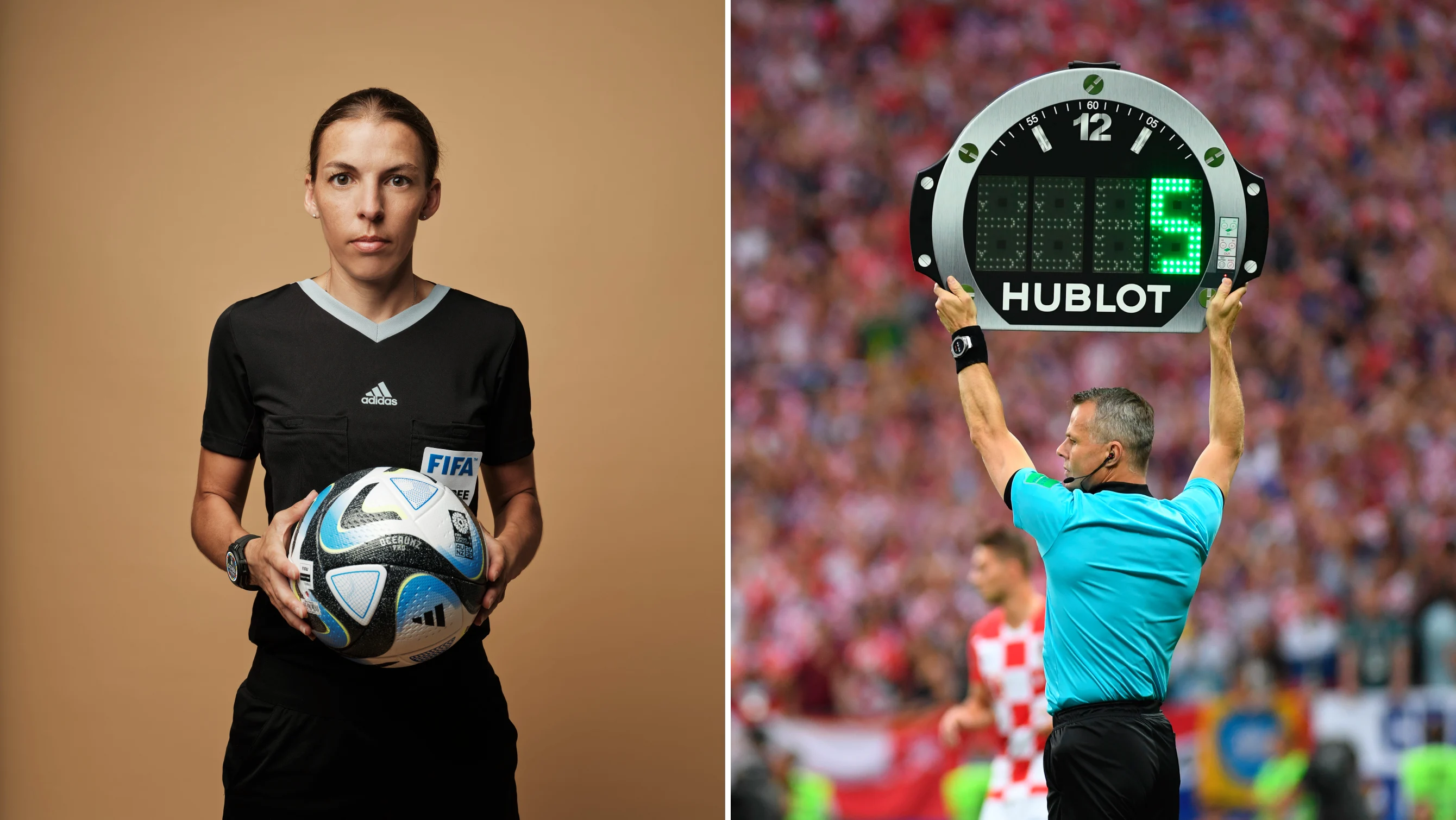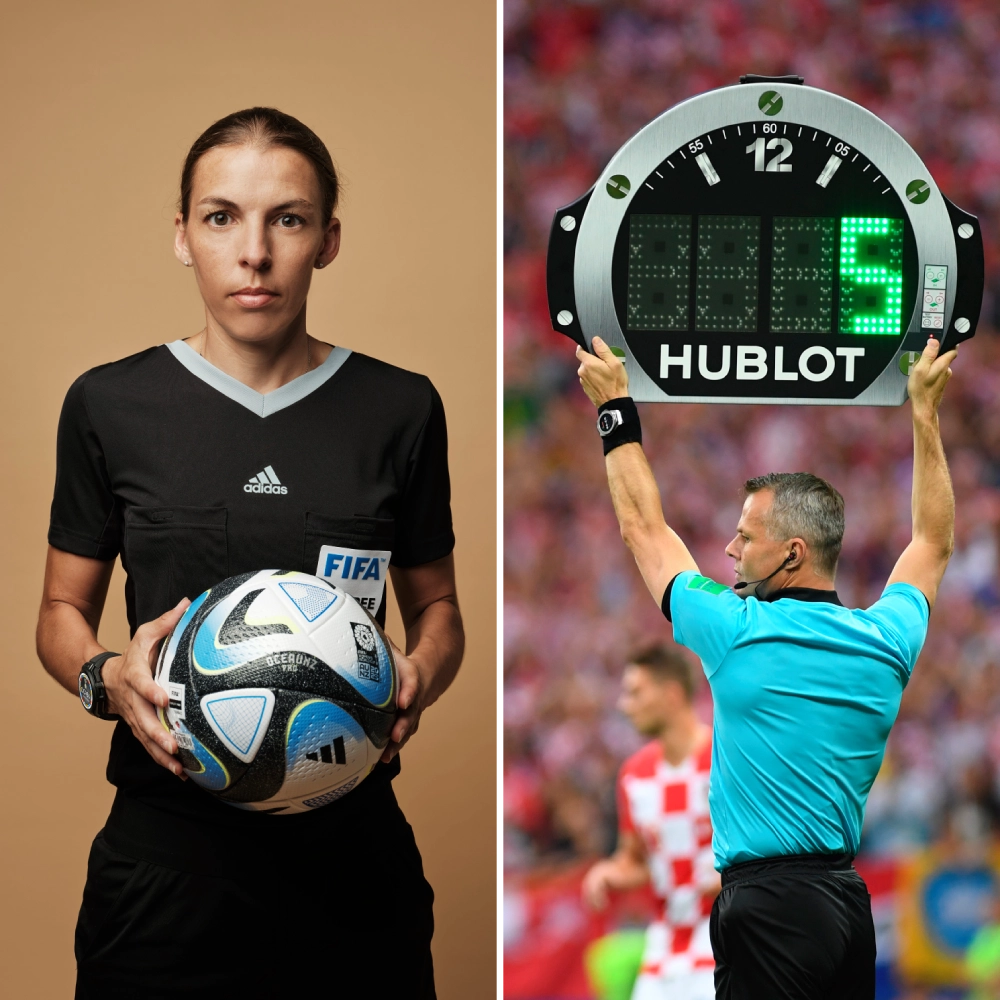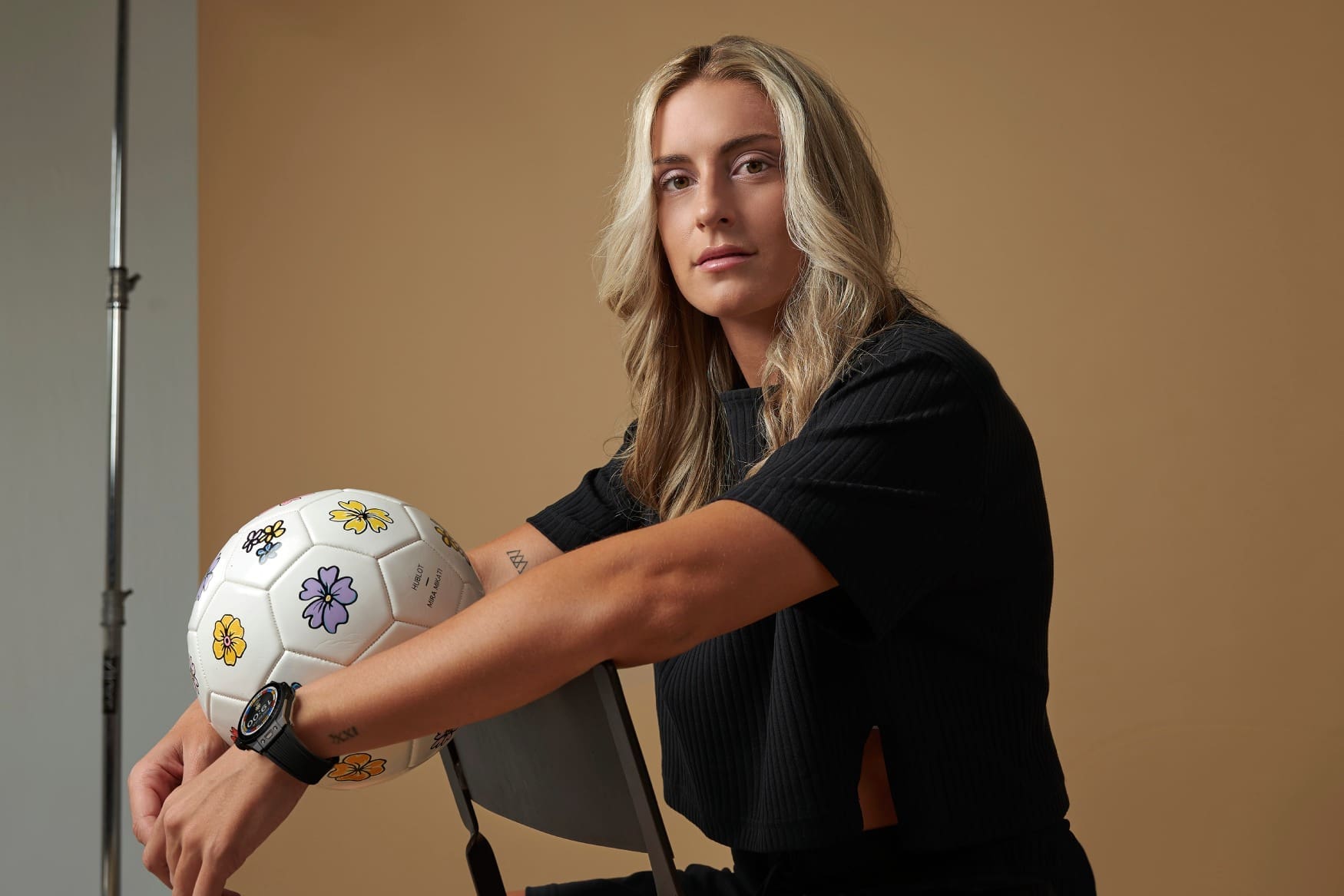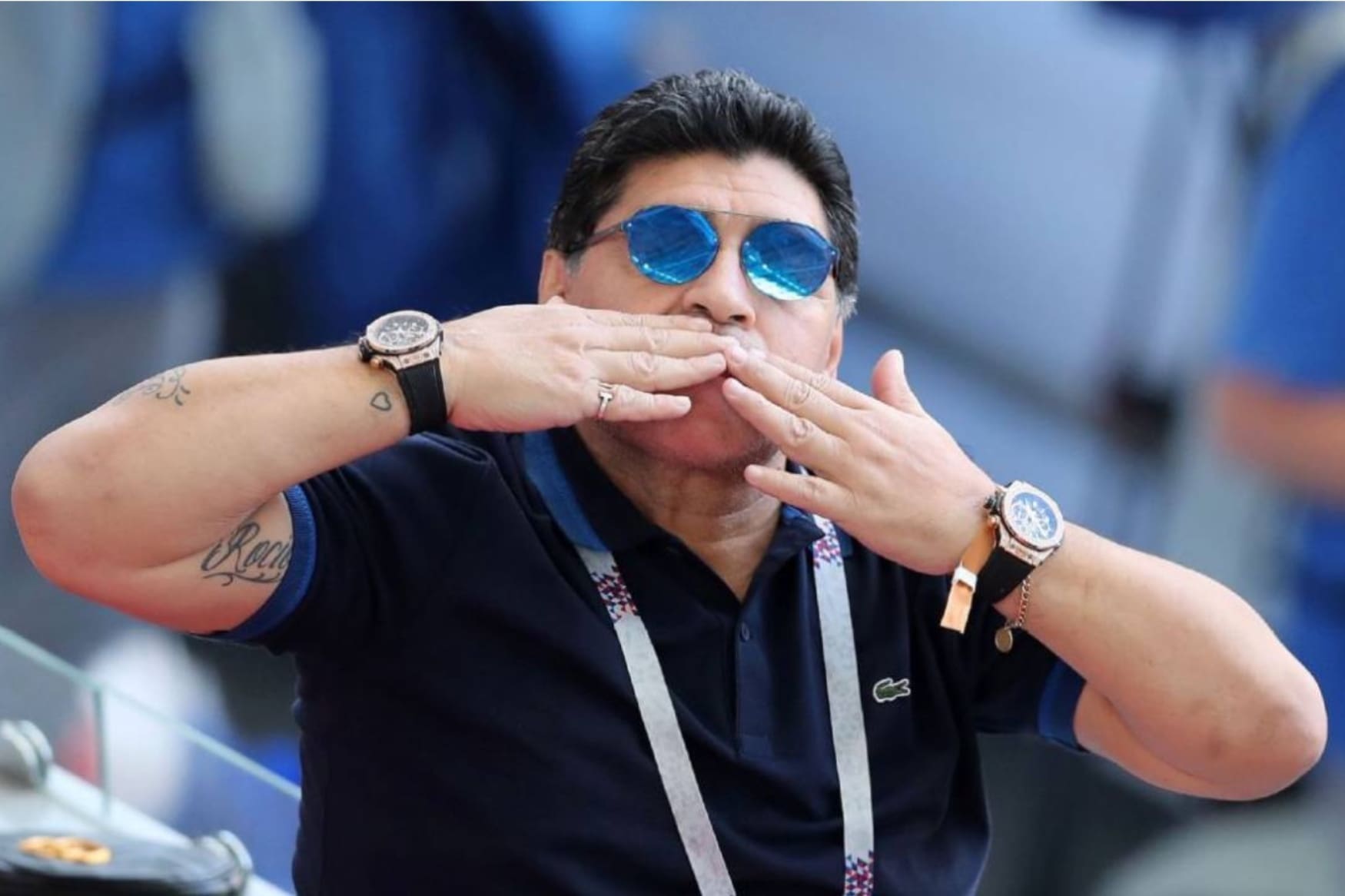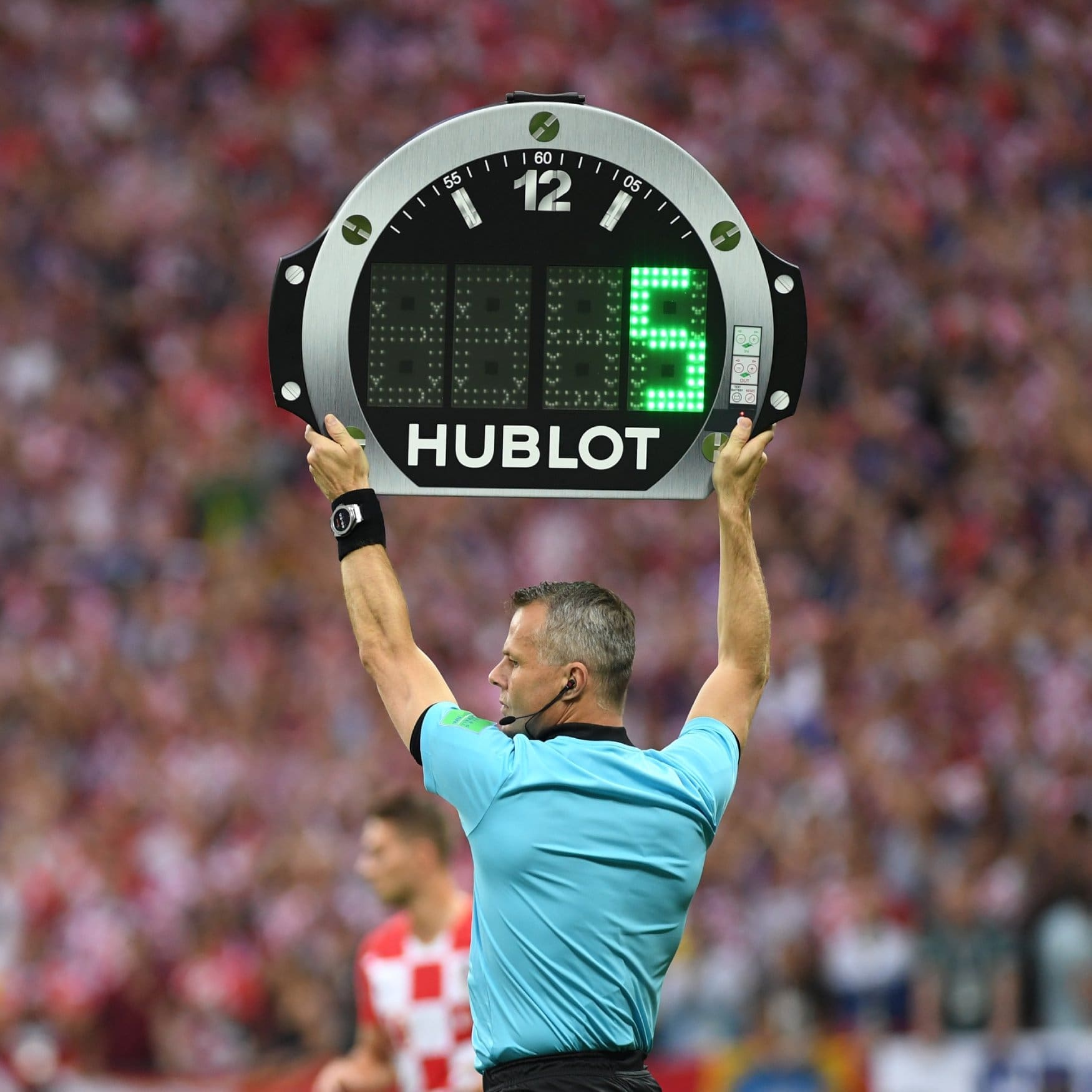Football is running on Hublot time
Borna BošnjakAs I settled into the cushioned seats metres away from the meticulously groomed turf of AAMI Park (or Melbourne Rectangular Stadium if you prefer a totally unimaginative name), referee Stephanie Frappart led the Australian and Canadian teams out of the tunnel. With a single shrill whistle, the digital clock with a big “HUBLOT” sign started to count down the time. Even though there was plenty of on-field excitement, I couldn’t prevent the inner watch nerd from a spot of watchspotting. All the usual culprits were there, including a healthy smattering of Hublot, though the Big Bang brand was the only one that could claim the bragging rights for an on-field cameo, with a Hublot featuring on Frappart’s wrist.
This is no coincidence, as every official tournament referee sports a third-generation Big Bang e, and especially so in Frappart’s case as a Hublot ambassador. It’s not just the refs that were captured by Hublot, either – the brand has such a tight grasp on the sport, going much further than simply being named as official timekeepers for football’s greatest events. If you don’t believe me, here’s a bit of trivia – who was the last official timekeeper of the men’s World Cup before Hublot took over, and when was it?
Many wrists, many eyeballs
On the individual level, Hublot secured the signatures of world champion Kylian Mbappé and two-time Ballon d’Or Féminin winner Alexia Putellas, among many others. In fact, the Hublot Ambassador FC could field a scary starting 11, including Alex Morgan, Marcel Desailly and Luís Figo, all coached by José Mourinho, the Special One himself.
It’d be rude of me not to mention Pelé and Diego Maradona as well, a mean attacking pair of ambassadors, especially when one of them insisted on wearing two watches, one on each wrist.
It’s the 90th minute, and your team is chasing the winner. Their attacking waves have been crashing against the parked bus defence for the better part of the second half – likely inspired by Mourinho’s work. The camera focuses on the fourth official, who raises the Hublot-branded and Big Bang-shaped board and signals an additional 5 minutes of hope. As the final seconds tick down, the grizzled goalkeeper who’s been shouting commands the whole game sends a desperate long ball upfield, only for the legendary centre-back whose attacking prowess ends at the halfway line to head the ball into the back of the net. Elation. Peter Drury’s voice roars from the commentator’s box, blabbing on poetically about how incredible that was.
Is that a needlessly dramatic way to say that Hublot branding in football stadiums is beneficial for the brand, even in situations where the connotations may be purely subconscious? Absolutely. However, though I’m no psychiatrist, the subconscious is scary and works in mysterious ways. With more than a billion people reportedly tuning in to watch the 2022 World Cup final, which coincidentally featured a lot of added time, it’s no surprise Hublot is proud to be its sponsor.
While not meant to be everyone’s first choice in terms of design nor pricing, Hublot’s never been the brand to only relate themselves with sports exuding luxurious connotations. Hublot’s involvement in boxing and cricket, alongside football, are clear attempts to appeal to a different sort of crowd. Call it the “sports of the people”, if you will – but the fact of the matter is, whether on the front of Mayweather’s shorts or strapped to a referee’s wrist, it’s a gamble that has paid off.




